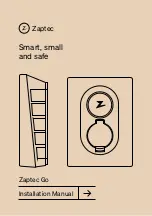
characteristics, e.g. pulling to one side.
This may indicate that the wheels or tires
are damaged. If you suspect that a tire is
defective, reduce your speed immediately.
Stop the vehicle as soon as possible to
check the wheels and tires for damage.
Hidden tire damage could also be causing
the unusual handling characteristics. If you
find no signs of damage, have the tires and
wheels checked at a qualified specialist
workshop.
R
When parking your vehicle, make sure that
the tires do not get deformed by the curb
or other obstacles. If it is necessary to drive
over curbs, speed humps or similar
elevations, try to do so slowly and at an
obtuse angle. Otherwise, the tires,
particularly the sidewalls, may be
damaged.
Regular checking of wheels and tires
G
WARNING
Damaged tires can cause tire inflation
pressure loss. As a result, you could lose
control of your vehicle. There is a risk of
accident.
Check the tires regularly for signs of damage
and replace any damaged tires immediately.
R
Regularly check the wheels and tires of
your vehicle for damage at least once a
month, as well as after driving off-road or
on rough roads. Damaged wheels can
cause a loss of tire pressure. Pay particular
attention to damage such as:
-
cuts in the tires
-
punctures
-
tears in the tires
-
bulges on tires
-
deformation or severe corrosion on
wheels
R
Regularly check the tire tread depth and
the condition of the tread across the whole
width of the tire (
Y
page 331). If necessary,
turn the front wheels to full lock in order to
inspect the inner side of the tire surface.
R
All wheels must have a valve cap to protect
the valve against dirt and moisture. Do not
mount anything onto the valve other than
the standard valve cap or other valve caps
approved by Mercedes-Benz for your
vehicle. Do not use any other valve caps or
systems, e.g. tire pressure monitoring
systems.
R
Regularly check the pressure of all the tires
including the emergency spare wheel or the
spare wheel, particularly prior to long trips,
and correct the pressure as necessary
(
Y
page 334).
Observe the notes on the emergency spare
wheel (
Y
page 361).
The service life of tires depends, among other
things, on the following factors:
R
Driving style
R
Tire pressure
R
Distance covered
Important safety notes on the tire
tread
G
WARNING
Insufficient tire tread will reduce tire traction.
The tire is no longer able to dissipate water.
This means that on wet road surfaces, the risk
of hydroplaning increases, in particular where
speed is not adapted to suit the driving
conditions. There is a risk of accident.
If the tire pressure is too high or too low, tires
may exhibit different levels of wear at
different locations on the tire tread. Thus, you
should regularly check the tread depth and
the condition of the tread across the entire
width of all tires.
Minimum tire tread depth for:
R
Summer tires:
â
in (3 mm)
R
M+S tires:
ã
in (4 mm)
Operation
331
Whee
ls
and
tires
Z
Содержание GLK 250 BlueTEC
Страница 4: ...I n f o r m a t i o nP r o v i d e db y...
Страница 32: ...30 I n f o r m a t i o nP r o v i d e db y...
Страница 42: ...40 I n f o r m a t i o nP r o v i d e db y...
Страница 98: ...96 I n f o r m a t i o nP r o v i d e db y...
Страница 112: ...110 I n f o r m a t i o nP r o v i d e db y...
Страница 144: ...142 I n f o r m a t i o nP r o v i d e db y...
Страница 220: ...218 I n f o r m a t i o nP r o v i d e db y...
Страница 330: ...328 I n f o r m a t i o nP r o v i d e db y...
Страница 380: ...378 I n f o r m a t i o nP r o v i d e db y...
Страница 381: ...379 I n f o r m a t i o nP r o v i d e db y...
Страница 382: ...380 I n f o r m a t i o nP r o v i d e db y...
















































